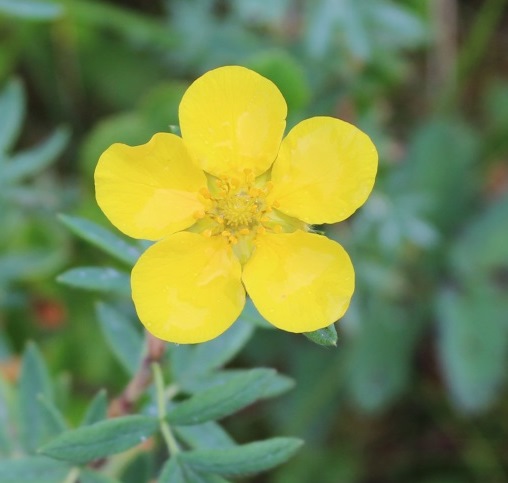Tundra Rose

Botanical Name: Potentilla fruticosa
Common Name: Tundra Rose or Shrubby Cinquefoil
Other Names: qutuneskiiq or yakuutaaq qutuneskiiq or yakuutaaq (the second word was alutiicized from a Russian word)
Found in: Bogs, tundra, ,Meadows, stream banks, river banks, river terraces, river bluffs, floodplains, lake shores, and occasionally alpine slopes
Physical Characteristics: This shrub grows to 3.9–39.4 inches tall, rarely up to 4.9 ft. The habit is variably upright to sprawling, but stems are often ascending especially those stems with many long branches. The bark of older stems shreds with long thin strips. The plants are densely leafy, the leaves divided into five or nine pinnate leaflets (the arrangement of feather-like or multi-divided features arising from both sides of a common axis). The leaflets are linear-oblong, 3–20 mm (0.1–0.8 in) long. The foliage (both leaves and young stems) is pubescent, variably covered in fine silky, silvery hairs about 1 mm long. The flowers are on the tops of stems and are about 1.2 inches across, with five petals and 15–25 stamens; the petals are pale to bright yellow. Flowering is typically from early to late summer. It is normally found growing in moisture-retentive soils in swamps and rocky areas.
Nutritional Value: none available
Parts of the plant used: stems, leaves and flowers.
When plant should be gathered: late June, July and August
Plant applications: tea
Reported Benefits: Colds/flu, pneumonia, sore throat, stomach trouble (gas), and tuberculosis.
Preparation/Processing: Stems, leaves and flowers were boiled and the resulting tea drunk to treat symptoms (Russell 1991)
